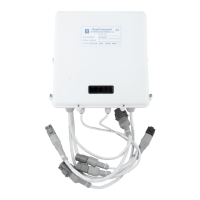• Lit Steady: When the red LED is Lit Steady, this indicates that the Station is in command and
in Normal operative mode.
• Not Lit: When the red LED is Not Lit, that Station is not in command, or there is no power to
the Control System.
• Blinking Slowly: A Slow Blinking red LED indicates that the Control Head is in Throttle Only
Mode (Warm-up Mode).
• Blinking Rapidly: A red LED that is Blinking Rapidly indicates that the System is in Troll
Mode.
G Has anything on the vessel changed shortly prior to or when the problem arose?
This question is often overlooked, but should be considered. Obvious changes such as additions or
changes to the electrical/ electronic equipment onboard can affect the electrical load and in turn the
Processor’s power supply.
Ask the operator if any changes or maintenance to the vessel’s machinery have occurred lately. Items
which are significant to you, the technician, may not seem so to the casual owner or operator. An
example would be changes to the engine’s fuel system.
Ask about changes, that when initially considered, appear to have nothing to do with the Control
System. An example where this really occurred was on a vessel which had recently been repainted. For
unknown reasons, the painter took it upon himself to disconnect the connections at a Control Head and
then reconnected it incorrectly.
In many cases, these simple questions can resolve a problem with no further action from you, the technician.
Take the time to consider these questions. In the long run, you will save yourself and the customer a lot of
time and money.
10.3 Troubleshooting Problem Resolution
If the problem could not be resolved by asking the questions in the previous section, a careful inspection of
the Control System may be the next step. Even in situations where the problem was found and corrected, it is
good practice to always perform a careful inspection of the entire Control System each and every time you
are asked aboard a boat.
Always verify that the installation of the System is in compliance with the Installation Manual by carefully
inspecting the following:
10.3.1 DC Power
A Ensure that the Processor(s) is connected to a properly charged 12 or 24 VDC battery
through a 10 Ampere circuit breaker.
B To ensure reliable power to the Processors an APS (Automatic Power Selector) is strongly
recommended. The APS take inputs from two separate power sources. Whichever power
source is at the higher voltage level, will be automatically switched through.
C Refer to S-214 Automatic Power Selector Model: 13505.
10.3.2 Component Location
10.3.2.1 Control Heads
There are virtually no restrictions regarding the location of the 400 Series and MC2000 Series Control
Heads, as long as the bottom is protected from the environment. The 500 Series Control Heads must
be mounted to a console and the 700 Series are waterproof from top to bottom.
Refer to Section 11: Appendix A - System Components and Specifications - Control Head Reference
Sheet for Installation requirements.
10.3.2.2 Processors
The Processors are typically mounted in the engine room, while maintaining a minimum distance of 4
feet (1,22m) from sources of high heat and EMI (Electro Magnetic Interference) or RFI (Radio
Frequency Interference).
Refer to Section 3: Plan the Installation, for Installation requirements.

